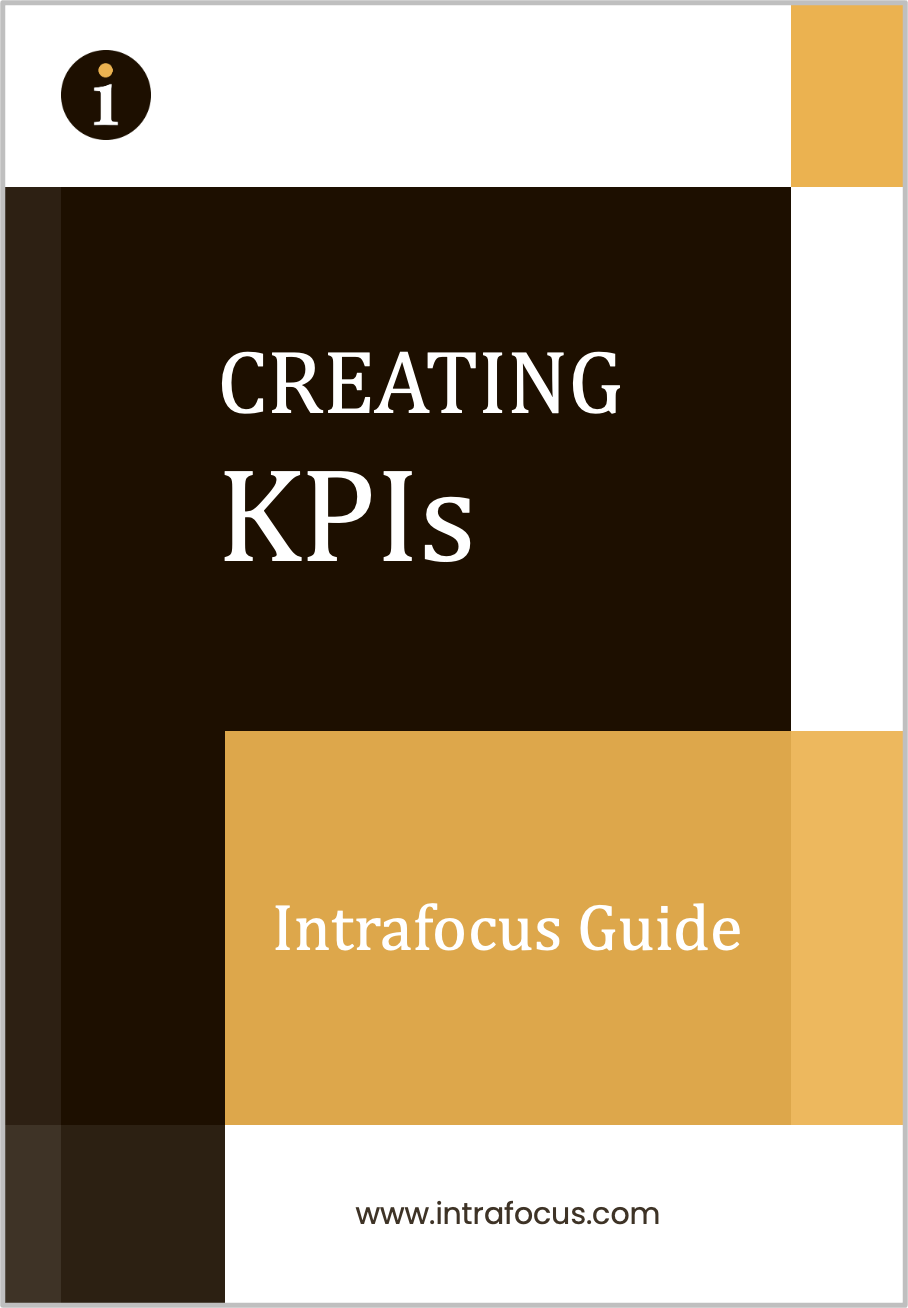Measuring Success – We’re moving on at a pace with our deep-dive into the Intrafocus 7-step Strategic Planning Process (SPP). Today we’re going to turn our attention to Key Performance Indicators and targets. If you want a quick recap on last week’s topic, look at the Strategic Objectives article.
We talk a lot about KPIs because of the importance of ensuring consistent terminology when developing a strategy. It’s easy to confuse a KPI with a business project or an operational performance metric. But, as ever, we have the tips and techniques you need to develop these critical strategic measures – and to get them right.
Measuring success, what is a KPI?
A Key Performance Indicator is a strategic measure that evidences the degree to which your strategic objectives are achieved during a specific time frame. KPIs can always be compared and countable. They may also be lead or lagging. The KPI measures how well you are doing on your objectives and lets you chart your progress objectively and meaningfully.
How do we develop them?
At Intrafocus, we progress KPIs with a standalone workshop, which takes around two hours and requires senior business managers, with a contribution from the strategy director or nominated lead.
What makes a KPI ‘real’?
Let’s recap the defining characteristics of a ‘true’ KPI:
- It must be countable – so that a defined quantity is assigned via a number, percentage or currency. Note that this doesn’t need ‘percentage achieved’. Success needs to be measured by the objective’s outcome rather than the completion of work.
- It must be comparable, usually against a benchmark or comparator to measure whether the counted figure is over-performing, acceptable or sub-standard.
- It must be evidenced – every KPI must be consistently observable by all its stakeholders. Evidence should be clear, value-based and specified.
- It MUST have a linked objective – the KPI must only contribute towards a strategic objective. (Yes, operational measures must be tracked too, but these are separate.) This is the no.1 golden rule of KPIs. No linked objective? Not a KPI.
- Time-bound – everything must be measured within a time period.
Once these ‘rules’ have been met, the KPI must also be rated by importance and given a suitable delivery owner.
This entire process can be challenging, so it’s often worth having a strategy facilitator in place. Intrafocus consultants have years of experience guiding our proven Strategic Planning Process. We can unlock excellent results by guiding your senior leaders, decision-makers and subject-matter experts through each stage.
Tips for success:
1. Take your time
It’s essential to take your time when assessing KPIs. After all, your business will likely focus on their attainment for a good year – or even longer. If you can’t quite get to the point you want, pause and return to it. Correcting the KPI is better than wasting a year’s efforts and resources on measuring the wrong thing.
2. Think carefully about owners
A KPI owner is critical to its success. The owner should have some degree of control over the KPI and its attainment, be able to feed into its objective actively, and agree to own it – otherwise, you’ll find a lack of engagement. Additionally, the owner must know where to get the necessary measurement data and be committed to providing this data regularly to measure and evidence progress over time. (Note: automation can make this process far easier, which we’ll cover later.)
3. Use a model
Some businesses like to use their tried and tested approach to establishing strategic KPIs, but others prefer to use established and proven methodologies such as the Balanced Scorecard.
4. Consider the RAG model
When setting the thresholds for each KPI, consider using the very intuitive RAG model, which assigns a ‘red, amber or green’ score to each KPI during its reporting stage. For each KPI, set the thresholds of acceptability, which will tell you whether or not it is being achieved. For example, for a KPI measuring average client engagement hours each month within a B2B business, the red/unacceptable threshold might be 2 hours, the acceptable level might be 4, and the ‘over-exceeding’ might be 5+ hours.
5. Recording your outputs
For every KPI you identify, create a table that tells your business everything it needs to know about that KPI. For example:
- What the KPI is, and what strategic objective it will measure
- Who owns it, and who is responsible for measuring its progress
- The frequency of measurement
- The scope of the KPI
- The method used to calculate the KPI for objective, consistent measurement if the individual charged with owning and updating it changes over time.
We provide a useful template in our Intrafocus 7-step Strategic Planning Process guide.
Next week…
We’ve covered KPIs, and next week we’ll move on to the step that most managers identify with best, the projects!
In the meantime, check out our free strategy resources online, or contact the Intrafocus team to learn more about how we can help you enjoy simple, stress-free strategic success.


